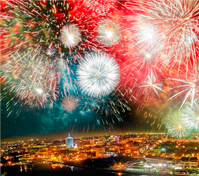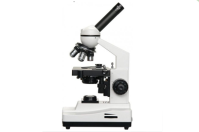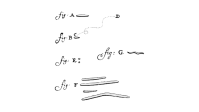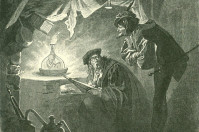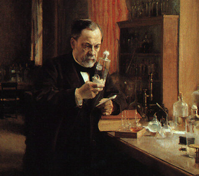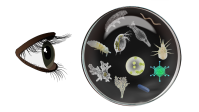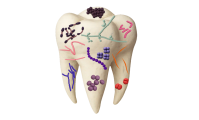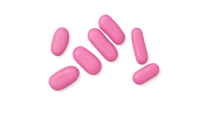6th Grade
Activities:
-
Examine six historical or conceptual observations drawn from real scientific discoveries
-
Step into the role of a scientist and propose logical explanations for each observation
-
Make connections between everyday phenomena and significant scientific ideas
-
Reflect on the role of creativity, questioning, and pattern recognition in science
Activities:
-
Learn the basics of microscope operation and magnification limits
-
Examine common objects like butterfly wings, sand, onion layers, and hair under the microscope
-
Explore macro photographs to identify objects in their environment
-
Use soft microbe toys to recognize microorganisms typically seen under a microscope
Activities:
-
Explore the differences between a magnifying glass, a stereomicroscope, a compound microscope, SEM, TEM, and STM
-
Identify which microscope was used to produce a given image
-
Match magnifying tools to their appearance, characteristics, and typical use cases
-
Analyze micrographs and determine what structures are shown
Activities:
- Observe and identify objects as they might have appeared through the first microscopes.
- Map the key European countries connected to pioneering microscope and microbe discoveries
- Build a simple DIY digital microscope using a smartphone, tape, and a silica gel bead.
- Reflect on the evolving understanding of microbes from the 17th to the 19th centuries.
Activities:
- Identify which creatures were once believed to appear “spontaneously” from mud, meat, or rags
- Analyze Paracelsus’s “homunculus” recipe and spot how he avoided blame when it didn’t work
- Reconstruct Redi’s classic experiment to refute spontaneous generation using meat and jars
- Understand why bacteria don’t appear in Pasteur’s swan-neck flasks
- Reflect on what spontaneous generation really means — and what it doesn’t
Activities:
-
Explore the inventions of the scientific revolution to understand the world where Pasteur made his discoveries
-
Examine the stories behind breakthroughs such as pasteurization, vaccines, and germ theory
-
Integrate Pasteur’s contributions among other scientific breakthroughs
Activities:
-
Studying who can be considered a microorganism, what groups of microorganisms exist, and what else interesting can be seen under a microscope.
-
Sorting microorganisms into protozoa, microscopic algae, fungi, and bacteria.
-
Distribution of microorganisms by their habitats.
-
Project: searching for and photographing microorganisms in the surrounding environment.
Activities:
- Identify common oral bacteria based on shape and Gram stain using interactive classification tasks
- Watch a step-by-step animation showing how a freshly cleaned tooth is colonized over time, and which microbes arrive first
- Complete a sequencing task to arrange bacterial groups in the order they colonize the tooth after brushing
- Explore the role of streptococci, lactobacilli, Veillonella, and Candida in dental plaque and oral health
- Examine live samples: students collect their own dental plaque, prepare a smear, stain it using the Gram method, and observe it under a microscope
Activities:
- Discover who first saw gut bacteria and how scientists like Mechnikov, Pavlov, and Kollath shaped our understanding of microbial health
- Explore which microorganisms can (and cannot) live in the digestive system, and how their roles vary from helpful to harmful
- Examine bacteria typical of the human gut, identifying their shape and Gram stain type through visual clues
- Reflect on a thought-provoking question: Is life with microbes better than life without them?
Activities:
- Watch an animated story of cell discovery, from Hooke and Leeuwenhoek to Schleiden, Schwann, and Virchow, ending with the three main principles of cell theory
- Get to know cell organelles by matching them with familiar associations
- Explore specialized cells: compare unicellular and multicellular organisms under the microscope, tell plants from animals, and guess cell functions by their shape
- Learn about colonial organisms — and find out why a Volvox won’t mind if you split it in half
Activities:
-
Sort Earth’s water reservoirs (oceans, rivers, glaciers, etc.) and discover what percentage of water each holds
-
Identify how much water is stored in everyday objects—from juicy fruits to dry items—with an interactive color-coding task
-
Reflect on water conservation: could oceans ever drain through a leaky faucet?
-
Select natural forces to “set the water cycle in motion” and watch it unfold in an animated model
-
Name each stage of the water cycle by typing answers into labeled fields
-
Discuss and imagine the boundaries of the water cycle—how deep underground and how far into space water molecules can travel
-
Click to identify factors that influence the water cycle (half are correct—can they spot them?)
-
Try fun, simple water experiments: sink or float tests, holding water in an upside-down glass, and more
Activities:
- Prioritize actions for survival in a deserted island scenario
- Plan and start a fire
- Find and procure safe water
- Build a shelter to protect themselves
- Locate and gather food
- Maintain a positive mindset under stress
- Create and send signals to rescuers
